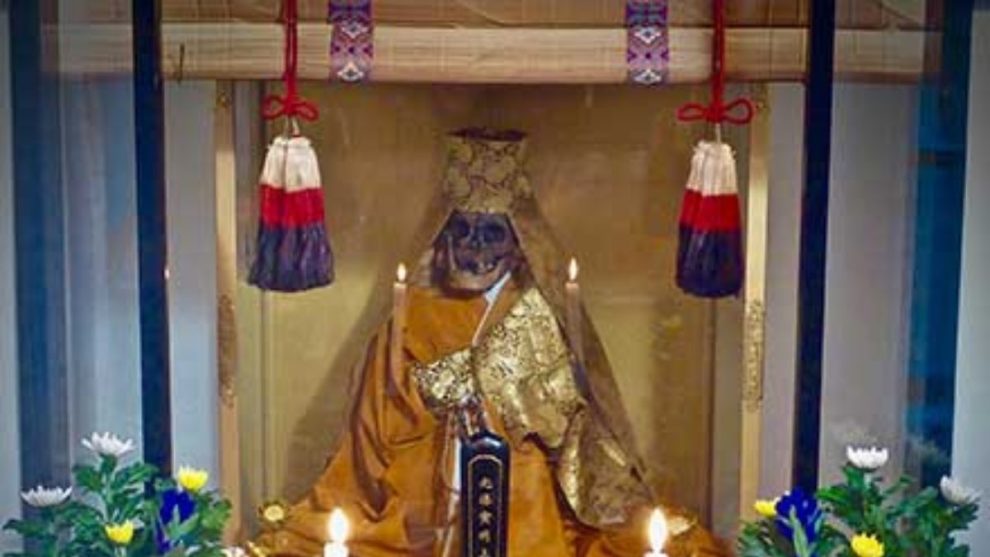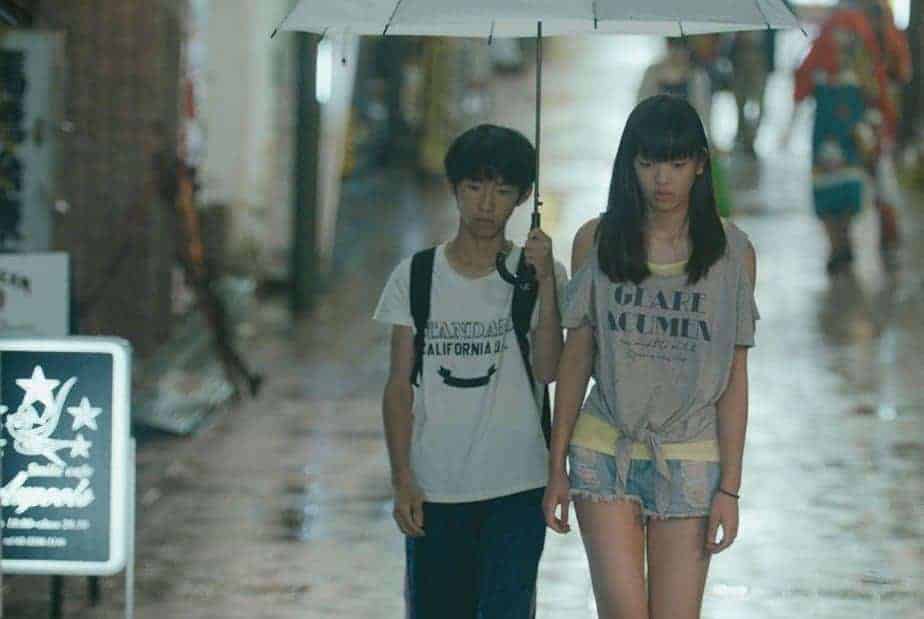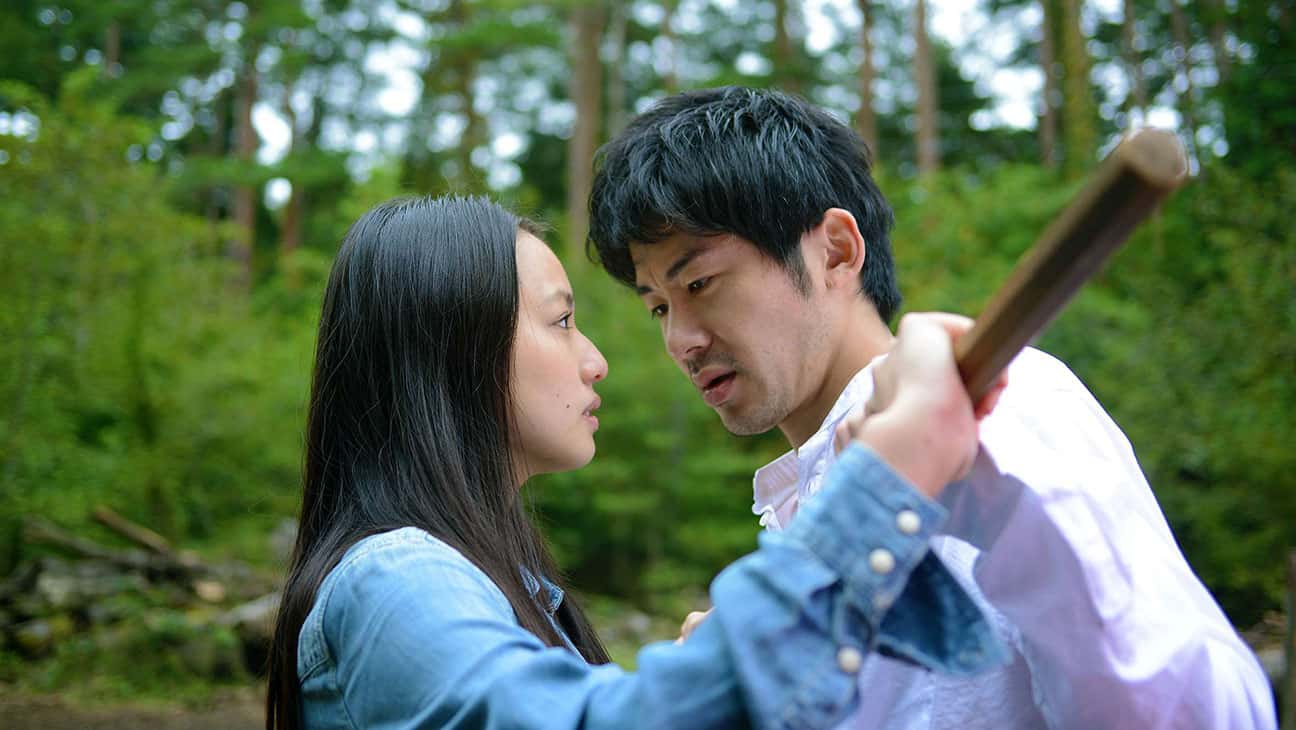Around a sacred mountain range in northeastern Japan, there are a number of Buddhist temples with robed mummies enshrined inside. They are known as “Living Buddhas”. Satoshi Watanabe visits two of these temples, Dainichi-bo and Churen-ji and speaks with researchers, monks and visitors about the whole concept of the mummification and the reasoning behind become a “Living Buddha”.
“The Buddha Mummies of North Japan” is screening in Yamagata International Documentary Film Festival

The initial scenes are characterized by a permeating ritualism, which is dictated by the lighting inside the temple, which only comes from candles and a fire, and the rhythm the percussion that are heard give. Through narration, the identity of the particular “Living Buddha” is revealed, while a rare redressing ritual, where the monks cut the robes of the mummies into talismans for the devotees is also presented. Phd Students, one Japanese and one from Italy, shed more light into the concept, while the largest part is reserved for the interview of a monk who attends one of these entities, who also explains about the permanency of asceticism.
The combination of all these elements highlights the whole phenomenon rather thoroughly, through descriptions of the dieting regimes (fasting by abstaining from grains in an effort to strip their body from any excess fat) the gradual poisoning of their bodies, and lastly, the procedure of burying themselves. Their purpose, of self-sacrificing in order to save the rest of the people of the community they inhabited is showcased in one of the cases presented here, which took place during the famine of the 1790s.
The impact these deities have is also shown, particularly through the narration of a couple where the husband is suffering from terminal lung cancer and has come to visit the temple and the remains of the Living Buddha as a last resort, while footage of the Komyokai Exhumation in 1978, and the “mummy fever” that overtook the whole country and particularly the news show the impact on a more wider level.
Lastly, the parallel between the moon and the Buddhist mentality, the concept of self-sacrifice, and a slight artistic element through a dying fish, conclude the documentary.
Considering that the documentary is just 20 minutes long, the intense density of information here becomes quite evident, in an excellent work regarding the editing and the overall pace, which allowed Satoshi Watanabe to present the concept in all its glory in just this brief time. In that regard, the presentation is ideal, stripped of any kind of unnecessary elements, with the camera of the director and Koichi Sato focusing in just the footage the shed more information about the main theme and its impact, and the editing job stripping the documentary of anything unnecessary.
As such, “The Buddha Mummies” emerges as a masterclass in documentary filmmaking, particularly due to the economical and thorough presentation of an aspect of Buddhism in Japan very few know about.















